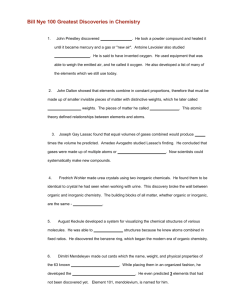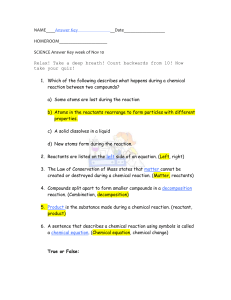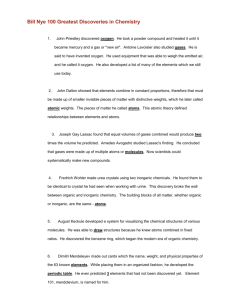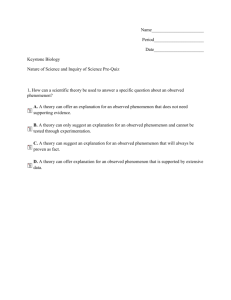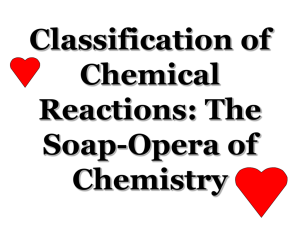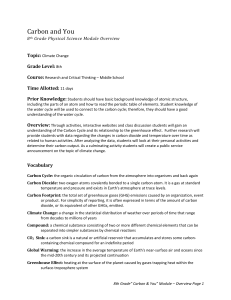“Counting Atoms in a Chemical Equation” Notes
advertisement
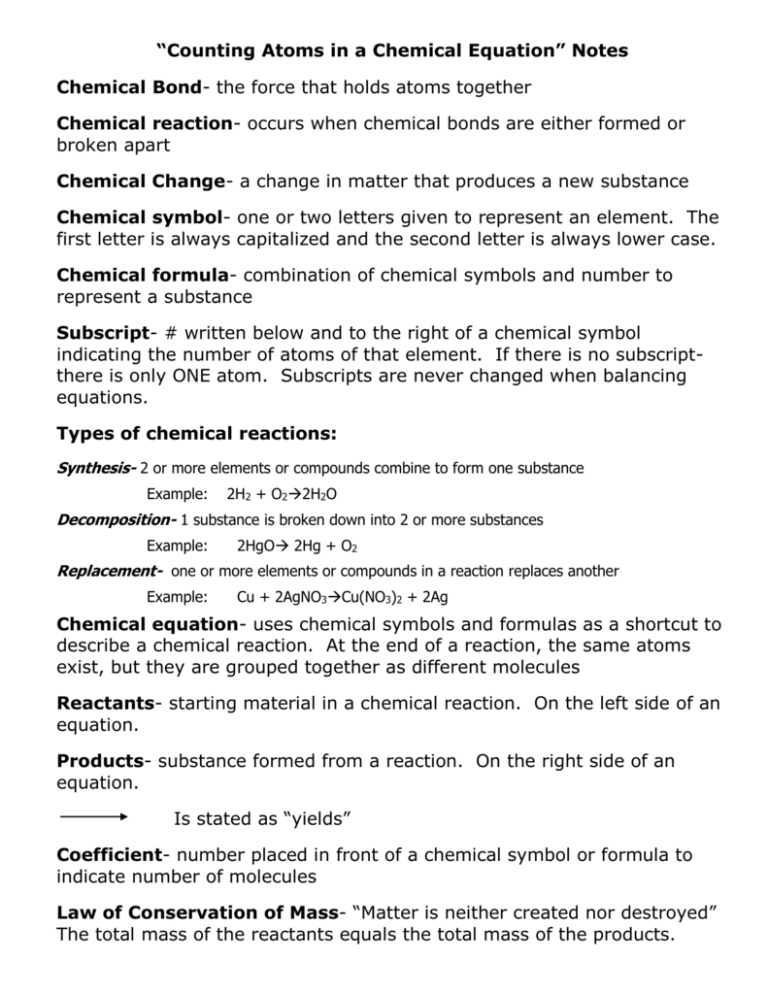
“Counting Atoms in a Chemical Equation” Notes Chemical Bond- the force that holds atoms together Chemical reaction- occurs when chemical bonds are either formed or broken apart Chemical Change- a change in matter that produces a new substance Chemical symbol- one or two letters given to represent an element. The first letter is always capitalized and the second letter is always lower case. Chemical formula- combination of chemical symbols and number to represent a substance Subscript- # written below and to the right of a chemical symbol indicating the number of atoms of that element. If there is no subscriptthere is only ONE atom. Subscripts are never changed when balancing equations. Types of chemical reactions: Synthesis- 2 or more elements or compounds combine to form one substance Example: 2H2 + O22H2O Decomposition- 1 substance is broken down into 2 or more substances Example: 2HgO 2Hg + O2 Replacement- one or more elements or compounds in a reaction replaces another Example: Cu + 2AgNO3Cu(NO3)2 + 2Ag Chemical equation- uses chemical symbols and formulas as a shortcut to describe a chemical reaction. At the end of a reaction, the same atoms exist, but they are grouped together as different molecules Reactants- starting material in a chemical reaction. On the left side of an equation. Products- substance formed from a reaction. On the right side of an equation. Is stated as “yields” Coefficient- number placed in front of a chemical symbol or formula to indicate number of molecules Law of Conservation of Mass- “Matter is neither created nor destroyed” The total mass of the reactants equals the total mass of the products. “Counting Atoms in a Chemical Equation” Notes Name: _________________ Chemical _____________- the force that holds atoms together Chemical _____________- occurs when chemical bonds are either formed or broken apart Chemical _________- a change in matter that produces a new substance Chemical ______- one or two letters given to represent an element. The first letter is always capitalized and the second letter is always lower case. Chemical ___________- combination of chemical symbols and number to represent a substance _______- # written below and to the right of a chemical symbol indicating the number of atoms of that element. If there is no subscript- there is only ONE atom. Subscripts are never changed when balancing equations. Types of chemical reactions: Synthesis- 2 or more elements or compounds _____________ to form _______substance Example: 2H2 + O22H2O Decomposition- 1 substance is __________ ____________ into 2 or more substances Example: 2HgO 2Hg + O2 Replacement- one or more elements or compounds in a reaction _______________ another Example: Cu + 2AgNO3Cu(NO3)2 + 2Ag Chemical ____________- uses chemical symbols and formulas as a shortcut to describe a chemical reaction. At the end of a reaction, the same atoms exist, but they are grouped together as different molecules _____________- starting material in a chemical reaction. On the left side of an equation. _____________- substance formed from a reaction. On the right side of an equation. Is stated as “yields” Coefficient- number placed in ___________ of a chemical symbol or formula to indicate number of __________________ Law of Conservation of Mass- “Matter is neither ___________ nor ____________” The total mass of the reactants equals the total mass of the products.




